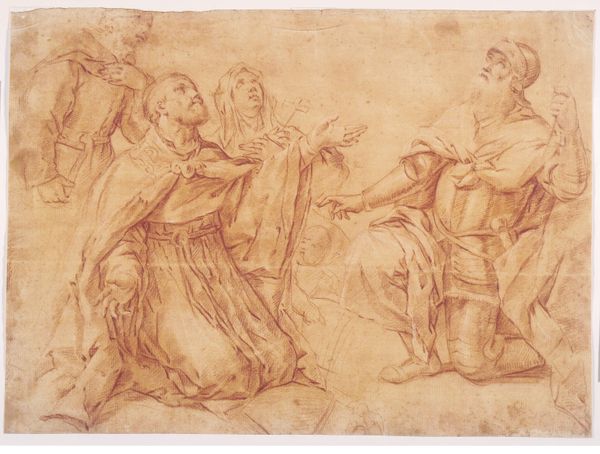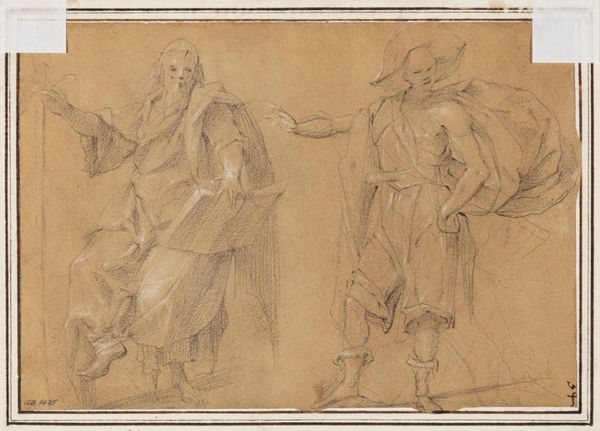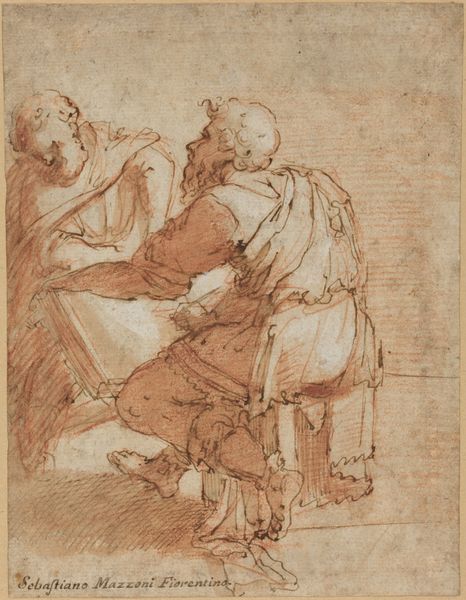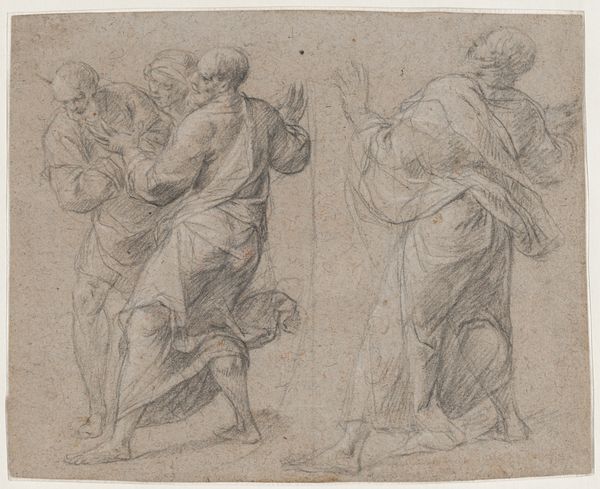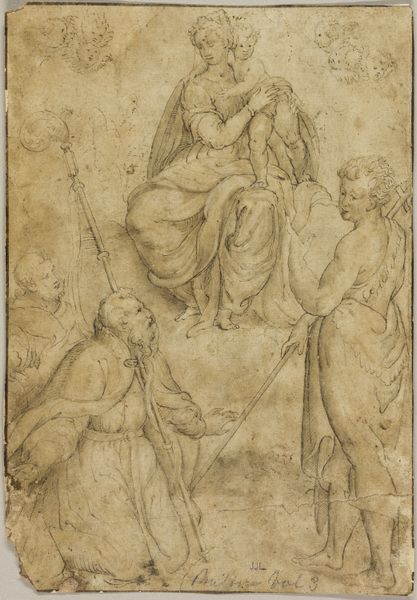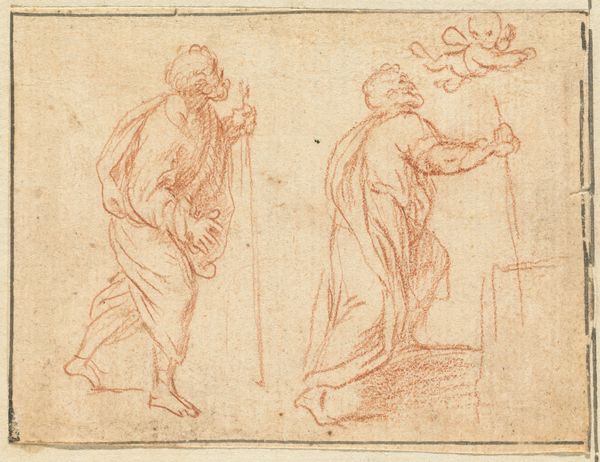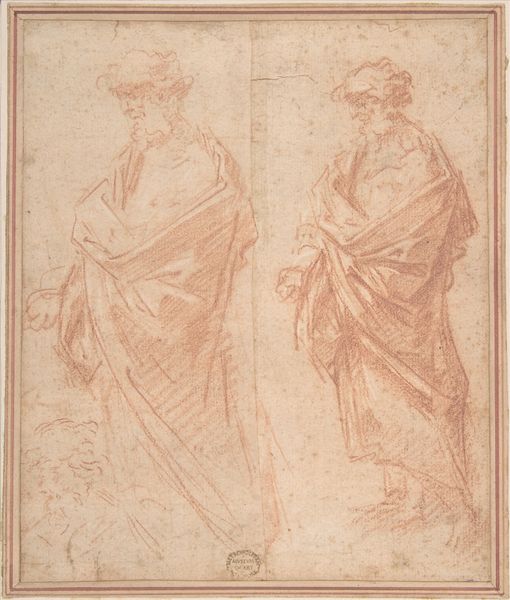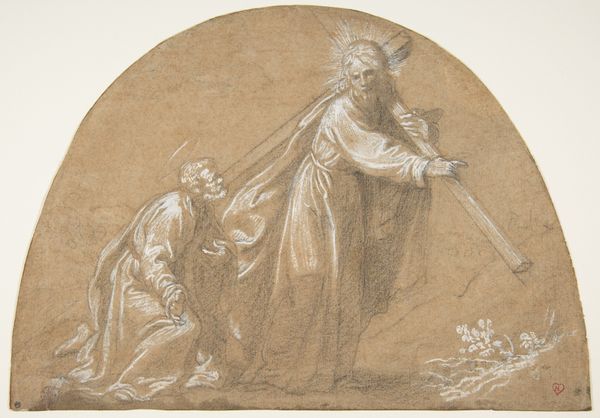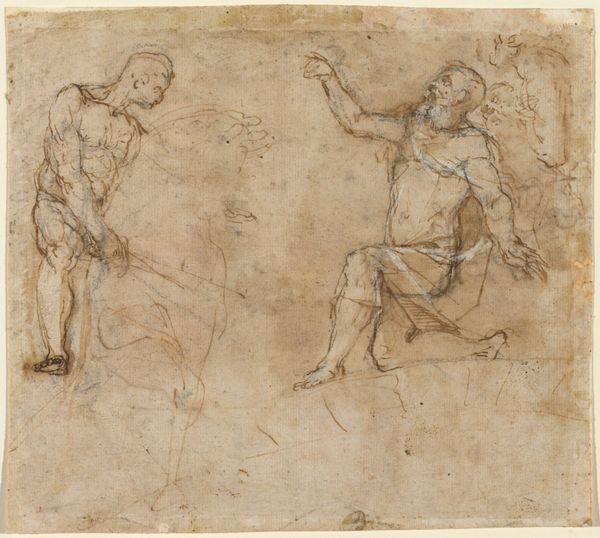
Sts James the Great (?) and John the Evangelist 1544 - 1615
0:00
0:00
drawing, pencil
#
drawing
#
figuration
#
11_renaissance
#
pencil
#
history-painting
#
italian-renaissance
Dimensions: 158 mm (height) x 222 mm (width) (bladmaal)
Curator: This drawing, “Sts James the Great (?) and John the Evangelist” by Filippo Paladini, sketched between 1544 and 1615, feels both monumental and fleeting because of the medium – pencil on paper. What strikes you initially about this work? Editor: I'm interested in how this pencil drawing seems like it could be a study for a larger history painting, judging by the title and subject matter. I'm curious how Paladini's choice of materials reflects the artistic or social context of his time. Curator: Indeed! Let’s think about drawing’s role at the time. Was it viewed as merely preparatory, subservient to painting and sculpture? Or did it have a value all its own, a more intimate exchange between artist, material, and the market? Consider the labor involved in both – pencil production, paper milling, and the time invested. How do you think these considerations impact our appreciation of this particular drawing? Editor: That makes me wonder about who this work was made for. Would a collector value it as an insight into Paladini's process, or might he have intended it for wider circulation as a more accessible image? How might prints factor into this equation? Curator: Exactly. The possibility of prints suggests a broadening of consumption. Think about how the relatively "cheap" nature of drawing materials—compared to oil paint or marble—democratizes artistic production. But, also consider the labor necessary to create it, regardless of price! What does the act of drawing allow the artist to do that painting might restrict? Editor: Drawing feels quicker, more immediate, like a direct record of the artist's hand. So, it allows a raw, initial form of expression. Curator: Precisely! This immediacy has a unique appeal. So, thinking about the interplay of materials, labor, and potential markets really reframes how we understand this image and its function. I learned something new, how about you? Editor: I now appreciate how the seemingly simple choice of pencil and paper unlocks deeper questions about the art world during the Italian Renaissance.
Comments
No comments
Be the first to comment and join the conversation on the ultimate creative platform.
